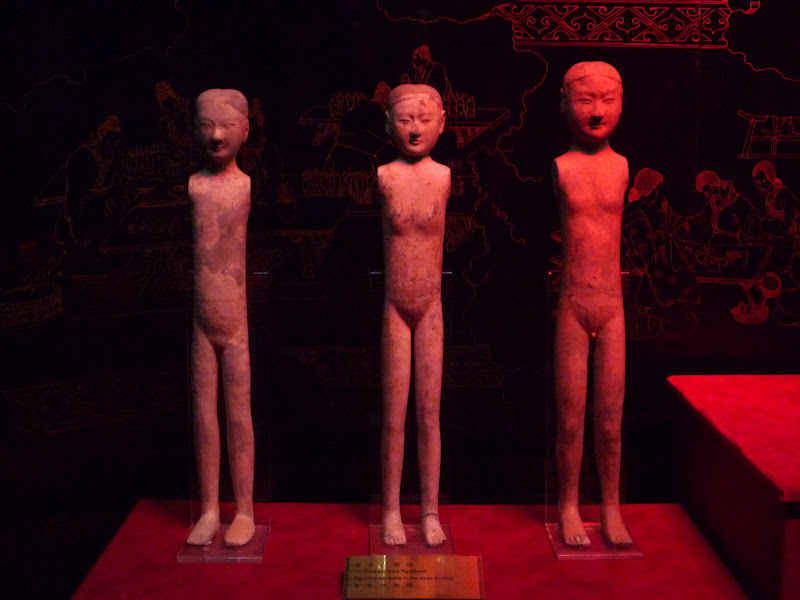While in Xi’an, we paid a visit to the Han Jing Mausoleum, the final resting place of Emperor Jingdi, the fifth Han emperor, who ruled China from 157-141 BC, and his wife. The impressive tomb, which covers 20 square kilometers, is still being excavated and the museum is designed to give visitors an incredible glimpse of the work that’s being done. Some panels of the museum floor and walls are glass so you can peer into the burial pits as you walk past. It was incredibly fascinating to see all the artifacts in the ground where they’ve been undisturbed for centuries.
The tomb was discovered by a construction crew building a highway in 1990. Located less than an hour from Xi’an, it’s best to hire a driver to take you there, perhaps as part of a trip to the airport. There were just a handful of other tourists during our visit, a blessing given the crowds we encountered seeing the more famous Terracotta Warriors.
While this tomb doesn’t have a life-size terracotta army, it does contain thousands of miniature terracotta figurines of servants and farm animals. It’s believed the human figures originally had wooden arms and silk clothing which rotted away long ago. Nearly 8,000 figurines have been unearthed so far. Replicas, reportedly made from the same clay as the originals, are available in the gift shop but are prohibitively expensive.





Another fascinating destination! Love the idea of glass floors to accommodate up-close viewing.